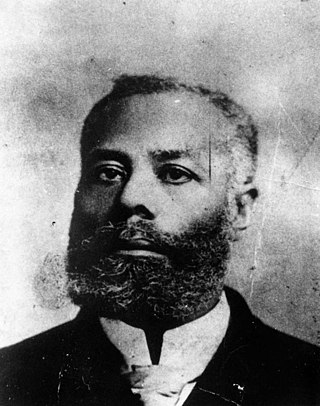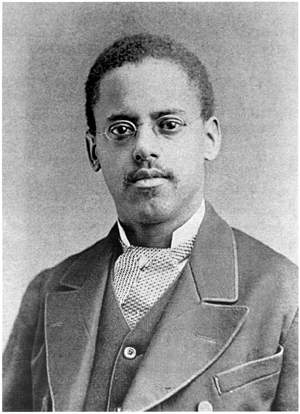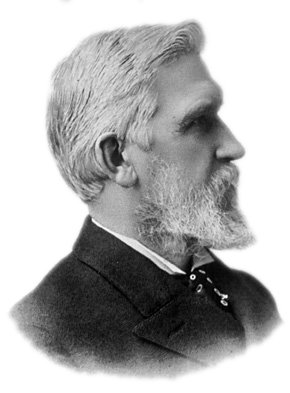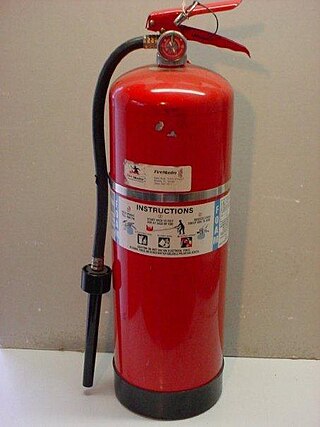
A patent is a type of intellectual property that gives its owner the legal right to exclude others from making, using, or selling an invention for a limited period of time in exchange for publishing an enabling disclosure of the invention. In most countries, patent rights fall under private law and the patent holder must sue someone infringing the patent in order to enforce their rights.

Thomas Alva Edison was an American inventor and businessman. He developed many devices in fields such as electric power generation, mass communication, sound recording, and motion pictures. These inventions, which include the phonograph, the motion picture camera, and early versions of the electric light bulb, have had a widespread impact on the modern industrialized world. He was one of the first inventors to apply the principles of organized science and teamwork to the process of invention, working with many researchers and employees. He established the first industrial research laboratory.

Elijah J. McCoy was a Canadian-American engineer of African-American descent who invented lubrication systems for steam engines. Born free on the Ontario shore of Lake Erie to parents who fled enslavement in Kentucky, he traveled to the United States as a young child when his family returned in 1847, becoming a U.S. resident and citizen. His inventions and accomplishments were honored in 2012 when the United States Patent and Trademark Office named its first regional office, in Detroit, Michigan, the "Elijah J. McCoy Midwest Regional Patent Office".

Garrett Augustus Morgan Sr. was an American inventor, businessman, and community leader. His most notable inventions were a type of two-way traffic light, and a protective 'smoke hood' notably used in a 1916 tunnel construction disaster rescue. Morgan also discovered and developed a chemical hair-processing and straightening solution. He created a successful company called "G. A. Morgan Hair Refining Company" based on his hair product inventions along with a complete line of haircare products and became involved in the civic and political advancement of African Americans, especially in and around Cleveland, Ohio.

Granville Tailer Woods was an American inventor who held more than 50 patents in the United States. He was the first African American mechanical and electrical engineer after the Civil War. Self-taught, he concentrated most of his work on trains and streetcars. One of his inventions is the Synchronous Multiplex Railway Telegraph, a variation of the induction telegraph that relied on ambient static electricity from existing telegraph lines to send messages between train stations and moving trains.

Lewis Howard Latimer was an American inventor and patent draftsman. His inventions included an evaporative air conditioner, an improved process for manufacturing carbon filaments for light bulbs, and an improved toilet system for railroad cars. In 1884, he joined the Edison Electric Light Company where he worked as a draftsman. The Lewis H. Latimer House, his landmarked former residence, is located near the Latimer Projects at 34-41 137th Street in Flushing, Queens, New York City.

Elisha Gray was an American electrical engineer who co-founded the Western Electric Manufacturing Company. Gray is best known for his development of a telephone prototype in 1876 in Highland Park, Illinois. Some recent authors have argued that Gray should be considered the true inventor of the telephone because Alexander Graham Bell allegedly stole the idea of the liquid transmitter from him. Although Gray had been using liquid transmitters in his telephone experiments for more than two years previously, Bell's telephone patent was upheld in numerous court decisions.

A fire sprinkler or sprinkler head is the component of a fire sprinkler system that discharges water when the effects of a fire have been detected, such as when a predetermined temperature has been exceeded. Fire sprinklers are extensively used worldwide, with over 40 million sprinkler heads fitted each year. In buildings protected by properly designed and maintained fire sprinklers, over 99% of fires were controlled by fire sprinklers alone.

Andrew Jackson Beard was an African American inventor, who introduced five improvements to the automatic railroad car coupler in 1897 and 1899, and was inducted into the National Inventors Hall of Fame in Akron, Ohio in 2006 for this achievement.
Frederick Grinnell was a pioneer in fire safety and was the creator of the first practical automatic fire sprinkler.
Sarah Elisabeth Goode was an American entrepreneur and inventor. She was one of the first known African American women to receive a United States patent, which she received in 1885 for her cabinet bed.

George Franklin Grant was the first African-American professor at Harvard. He was also a Boston dentist, and an inventor of an early composite golf tee made from wood and natural rubber tubing.

A fire extinguisher is a handheld active fire protection device usually filled with a dry or wet chemical used to extinguish or control small fires, often in emergencies. It is not intended for use on an out-of-control fire, such as one which has reached the ceiling, endangers the user, or otherwise requires the equipment, personnel, resources or expertise of a fire brigade. Typically, a fire extinguisher consists of a hand-held cylindrical pressure vessel containing an agent that can be discharged to extinguish a fire. Fire extinguishers manufactured with non-cylindrical pressure vessels also exist but are less common.

Alexander Miles was an African American inventor and businessman, known for being awarded a patent for automatically opening and closing elevator doors. He was awarded U.S. patent 371,207 on October 11, 1887.

Henry Sutton was an Australian designer, engineer, and inventor credited with contributions to early developments in electricity, aviation, wireless communication, photography and telephony.

Aleksandr Georgievich Loran, also known as Aleksandr Lovan or Aleksandr Lavrentyev, Alexander Laurant was a teacher and inventor of fire fighting foam and foam extinguishers. He lived in the Russian Empire.

The United States provided many inventions in the time from the Colonial Period to the Gilded Age, which were achieved by inventors who were either native-born or naturalized citizens of the United States. Copyright protection secures a person's right to his or her first-to-invent claim of the original invention in question, highlighted in Article I, Section 8, Clause 8 of the United States Constitution, which gives the following enumerated power to the United States Congress:
To promote the Progress of Science and useful Arts, by securing for limited Times to Authors and Inventors the exclusive Right to their respective Writings and Discoveries.

Thomas Elkins was an African-American dentist, abolitionist, surgeon, pharmacist, and inventor. He lived in Albany, New York, for most of his life, but travelled during his service as the medical examiner of the 54th and 55th Massachusetts infantries and visited Liberia. Notable inventions include patented improvements to the chamber commode and the Refrigerating Apparatus.
Kenneth J. Dunkley is an American physicist, inventor and business man. He is best known in the field of holography for inventing and patenting Three Dimensional Viewing Glasses (3-DVG). He serves as the president of Holospace Laboratories Inc. of Camp Hill, Pennsylvania.
















